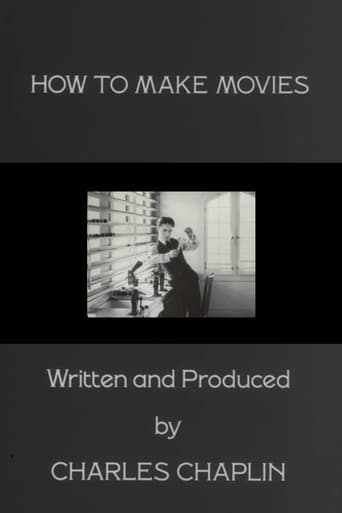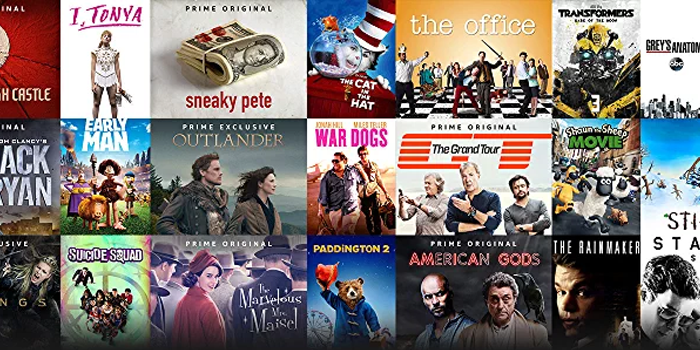

How to Make Movies (1918)
This film was never released for the general public. It was hidden in Chaplin's private vaults for forty years until he included some parts of it in his compilation 'The Chaplin Revue' in 1959.
Watch Trailer
Cast


Reviews
Am a big fan of Charlie Chaplin, have been for over a decade now. Many films and shorts of his are very good to masterpiece, and like many others consider him a comedy genius and one of film's most important and influential directors. From his period after Mutual, the "filmette" 'How to Make Movies' is more a Chaplin curio than a must see and to be seen really for historical interest and completest sake for anybody wanting to see everything Chaplin has done. As said a number of times, his post-Keystones efforts showed a noticeable step up in quality though from his Keystone period, where he was still evolving and in the infancy of his long career. The Essanay and Mutual periods were something of Chaplin's adolescence period where his style had been found and starting to settle. After Mutual the style had properly settled and the cinematic genius emerged. Other efforts of his from this period and year had much more of a sense of that than seen in 'How to Make Movies'.'How to Make Movies' is far from bad. It is interesting, like with the footage and rehearsal scene, and informative like with the negatives, though not really what one would think reading the title. A few parts are amusing like with the golf course.It looks quite good and shows a good deal of technical advancement since Chaplin's Keystone period, with it being clear that Chaplin was taking more time and not doing as much in one year. Liked seeing the behind the scenes footage of Chaplin's regular actors, which interested and charmed. On the other hand, do have to agree that 'How to Make Movies' is more informative than funny. Outside of a few amusing moments, there is not much funny here where some of the material feels familiar and the timing isn't sharp enough. Some have said that the pacing is an issue and cannot disagree here either, not everything gripped me.It does drag at times and at other points things feel jumpy structurally, giving the sense of incompleteness or parts intended to be there but weren't.Concluding, not easy to rate or review. For while it was far from bad, there was nothing special or exceptional here. 5/10 Bethany Cox
"How to Make Movies" is a 16-minute live action short film from 1919, so only one more year until this one has its 100th anniversary. Maybe when you read this review, it is already over a century old. This one is written by, directed by and starring Charlie Chaplin and it falls into the category of film about film because the master takes us on a journey through life in the film industry. And as much as the creation process is vital, playing golf is an essential component too. The cast includes the likes of Purviance and Campbell, longtime Chaplin collaborators, so those who not only enjoy Chaplin, but also his supporting cast members may want to check this one out especially. Of course, it is a black-and-white silent film. Sadly, I myself was not too well-entertained here. In the first half it almost felt more informative than funny to be honest to see how people saw the film industry a century ago. Chaplin's routine isn't necessarily bad and this film is not a failure by any means, but I have seen wittier, funnier and better in general by him on many occasions, in terms of both writing and performing. By then, he was an icon already, but there is nothing iconic about this movie we have here. I give it a thumbs-down.
This film is often not thought of as one to be included in Chaplin's filmography, but it is a historical record of a brief inside look in Chaplin's studios. Here the film originates with a genie granting a wish for a film studio, which materializes before our eyes. The film was released in early 1918 before Chaplin's first picture for the First National Corporation: A Dog's Life. Behind the scenes footage includes many of Chaplin's stock company, such as Edna Purviance and Henry Bergman. Other footage has Chaplin simply walking around his studios, eating a lemon, looking at his mail, getting into character, and playfully interacting with his stock company. The most interesting aspect of the film illustrates the film processing procedure circa 1918. There are several scenes on a golf course with Chaplin in character interacting with others or by himself. One of these scenes contains what looks to be the last footage of comic foil Eric Campbell who died in December 1917 in an auto accident. The film is not really a Chaplin film per se, but it's an interesting, historic curio in a home movie vein. **1/2 of 4 stars.
My understanding is that Chalie Chaplin made this film in 1918 to show the First National Picture Corporation when he signed to produce movies with them. Chaplin would cover all costs of making the movies and in return receive $125,000 per picture plus 50% of the revenues.The loose structure of the film is that a genie has granted Charlie one wish, which he uses to create a film studio. We then follow Charlie as he goes about filming and editing his next picture.Highlights for me are the rehearsal scene and when Charlie dresses up like the little tramp to do some on location filming at a golf course.This film truly plays like a "Behind The Scenes" feature from 1918. While all the situations are staged for comic effect. It is still interesting to see the day-to-day behind the scenes activities such as negatives being developed.The version I watched was Bonus Material on The Chaplin Revue DVD put out by Warner Bros. It had no musical score which really hampered the film. Overall, worth a watch, but far, far from Chaplin's best.


